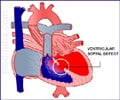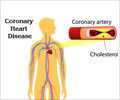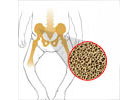Epoetin alfa is a product that stimulates red blood cell production.

Patients who survive ST-segment elevation myocardial infarction (STEMI; a certain pattern on an electrocardiogram following a heart attack) are at risk for developing infarct (an area of tissue death due to a local lack of oxygen) expansion and left ventricular (LV) remodeling (topographical and functional changes). Both are strongly associated with heart failure and death, according to background information in the article. There are several risk factors for infarct expansion and LV remodeling, including infarct size. "Given the global burden of ischemic heart disease and heart failure, therapies that limit infarct size and attenuate or reverse LV remodeling are needed," the authors write. Preclinical studies have shown that erythropoietin, a glycoprotein hormone, plays a cardioprotective role in various experimental models, and was associated with significant reductions in infarct size and improvements in LV function.
Samer S. Najjar, M.D., of the National Institutes of Health, Baltimore, and colleagues evaluated the safety and effect on infarct size of a single intravenous dose of recombinant human erythropoietin (epoetin alfa) in patients with STEMI who had undergone PCI. The randomized, placebo-controlled trial (the REVEAL trial) was conducted at 28 U.S. sites between October 2006 and February 2010 and included 222 patients. Participants were randomly assigned to treatment with intravenous epoetin alfa or matching saline placebo administered within 4 hours of reperfusion. One of the primary outcome measures of the study was infarct size, expressed as percentage of LV mass, assessed by cardiac magnetic resonance (CMR) imaging performed 2 to 6 days after study medication administration and again 12 (plus or minus 2) weeks later.
The researchers found that in the efficacy group, the infarct size did not differ between groups on either the first CMR scan (n = 136; 15.8 percent LV mass for the epoetin alfa group vs. 15.0 percent LV mass for the placebo group) or on the second CMR scan (n = 124; 10.6 percent LV mass vs. 10.4 percent LV mass, respectively). In the safety cohort, of the 125 patients who received epoetin alfa, the composite outcome of death, heart attack, stroke, or stent thrombosis (blood clot) occurred in 5 (4.0 percent) but in none of the 97 who received placebo.
In a prespecified analysis of patients age 70 years or older (n = 21), the average infarct size within the first week was larger in the epoetin alfa group (19.9 percent LV mass) than in the placebo group (11.7 percent LV mass).
"Although this concerning finding should be interpreted with caution due to the small number of older patients enrolled in the REVEAL trial and the lack of multiplicity adjustment in the analyses, it suggests the need for added vigilance before enrolling older patients in any future trial evaluating erythropoietin in the setting of myocardial infarction," the authors write.
Advertisement
Editor's Note: Please see the article for additional information, including other authors, author contributions and affiliations, financial disclosures, funding and support, etc.
Advertisement
Deepak L. Bhatt, M.D., M.P.H., of the VA Boston Healthcare System, Boston, comments on the findings of this study in an accompanying editorial.
"The totality of evidence strongly suggests that this class of medication [erythropoietin] has cardiovascular risk, most likely to manifest in higher-risk individuals. Until compelling data become available to support routine use of these agents in patients with anemia, it would be prudent to minimize their use, especially for patients at high risk for cardiovascular disease or with an acute ischemic syndrome. For situations in which use of these agents seems necessary such as when patients need frequent transfusions, it will be important to educate patients about the potential risks of ischemia so they are aware of the signs and symptoms and know to seek help should an ischemic or thrombotic syndrome develop."
(JAMA. 2011;305[18]1908-1909. Available pre-embargo to the media at www.jamamedia.org)
Editor's Note: Please see the article for additional information, including financial disclosures, funding and support, etc.
Source-Eurekalert














